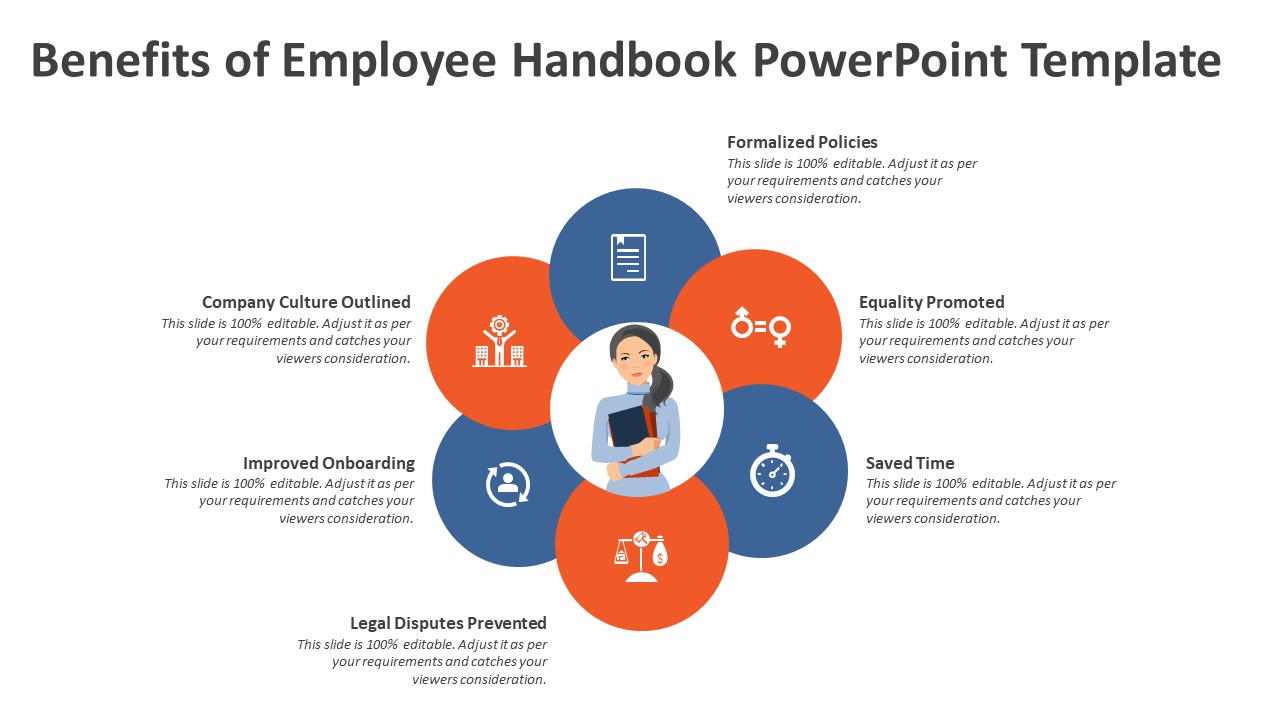
Employee Handbook Template to Formalize Policies
Creating an employee handbook can feel like a daunting task, but it’s a critical step in setting your team up for success. A well-crafted handbook serves as the backbone for company policies and procedures. It provides clarity and direction, ensuring that all team members are on the same page—literally. This article will guide you through the key components that should be included in your employee handbook to help you formalize your company’s policies and create an environment of transparency and understanding for your employees.
Welcome Message
Start your employee handbook with a warm welcome message. This is your chance to introduce the company’s culture, mission, and values. It sets the tone for the rest of the manual and gives employees a sense of belonging from day one. Share what makes your company unique and why you’re excited to have the reader as part of the team.
Company History and Culture
Dedicate a section to your company’s story and the culture you’re cultivating. This shouldn’t be a dry chronicle of dates and events. Instead, share the journey that led to the establishment of your business and highlight milestones that embody your corporate identity and values.
Employment Basics
Clarity is key when detailing the employment essentials. Outline the classifications of employment within your company, such as full-time, part-time, or contract work. Explain the probationary periods, job expectations, and performance review processes. Remember to keep the language simple and precise to avoid misunderstandings.
Code of Conduct
Your code of conduct communicates the behavioral expectations for your workplace. It should cover topics such as dress code, attendance, punctuality, and general workplace behavior. This is also where you’ll outline your policies on harassment, discrimination, and workplace violence, ensuring that all employees understand the importance of a respectful work environment.
Compensation and Benefits
This section should be a clear and concise rundown of employee compensation and any benefits that your company offers. This may include salary information, bonus structures, health insurance options, retirement plans, and other perks. Be sure to highlight any unique offerings that set your company apart from the competition.
Work Hours, Paid Time Off, and Leave
Provide a summary of the standard work hours and any expectations regarding overtime or shift work. Clearly outline how paid time off is accrued and the process for requesting time off. Additionally, describe the different types of leave available to employees, such as maternity leave, paternity leave, sick leave, and any other leaves provided under law or company policy.
Communication Policy
Because effective communication is integral to the success of any organization, describe your expectations and methods for internal communication. This might include guidelines on how to use company email, the importance of attending meetings, and the chain of command for raising concerns or issues.
Use of Company Property
Set forth the rules and expectations regarding the use of company property, such as computers, phones, and other equipment. Make it clear what constitutes acceptable use, and walk employees through the steps to take if company property is lost, stolen, or damaged.
Confidentiality and Non-Disclosure
Highlight the importance of maintaining confidentiality with respect to company and client information. Provide instructions on safeguarding sensitive data and the consequences of breaching confidentiality.
Safety and Health Policies
In this section, outline how your company prioritizes the health and safety of your employees. Address compliance with occupational safety laws, emergency procedures, guidelines for reporting accidents or hazards, and policies on drug and alcohol use.
Disciplinary Action
While it might be uncomfortable to think about, it’s essential to have a section that outlines the consequences for policy violations. Explain your disciplinary procedure in steps and make sure it’s clear that the purpose is not to punish, but to maintain a safe and productive work environment.
Technology and Data Policy
In an age where technology is ever-present in the workplace, it’s important to have a policy that addresses its use. Discuss acceptable online behavior, software usage, and guidelines for preserving digital security.
Acknowledgment of Receipt and Understanding
The final part of your employee handbook should include an acknowledgment page where employees confirm they have received, read, and understood the contents of the handbook. They should sign and date it, and hand it back to the employer for record-keeping purposes.
Frequently Asked Questions
Including a FAQ section can be incredibly helpful in addressing common concerns or questions your employees may have. This proactive approach can save time and reduce uncertainty.
Conclusion

Your employee handbook is more than just a document—it’s a roadmap for your company’s daily operations and a reflection of your organizational ethos. By investing the time and effort into creating a comprehensive, clear, and fair employee handbook, you’re building a foundation of trust and integrity that will guide your team’s conduct and contribute to a cohesive, productive workplace culture.
Remember, laws and best practices change, so be sure to review and update your employee handbook regularly to keep it current and relevant. Engage with your employees, seek feedback, and make amendments as necessary—it’s a living document that should evolve alongside your business.
A well-established employee handbook is your first line of defense against miscommunication and potential disputes. By embracing transparency and ensuring all team members have access to the same information, you’ll foster an environment where everyone can focus on what they do best—driving the success of your company.